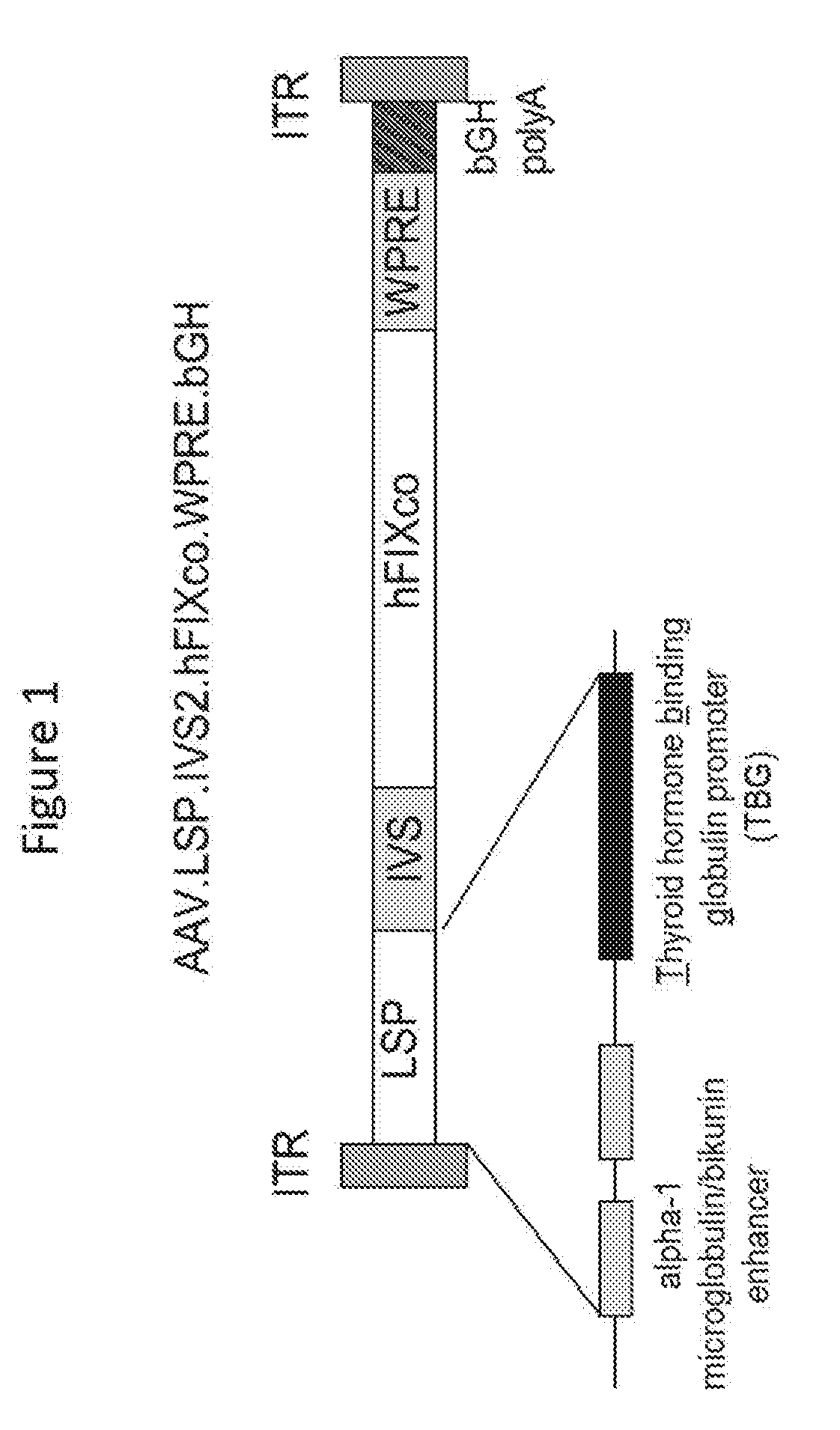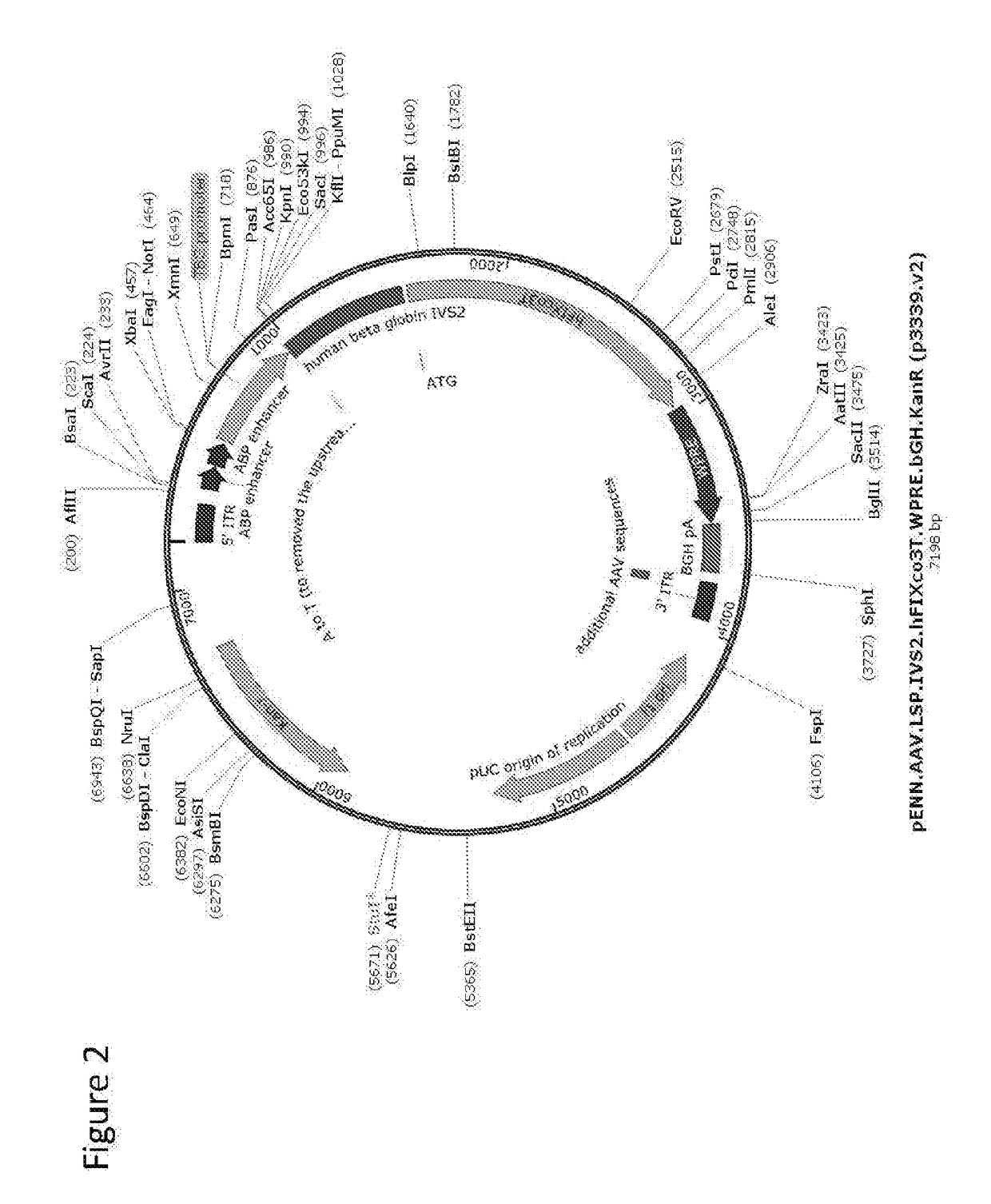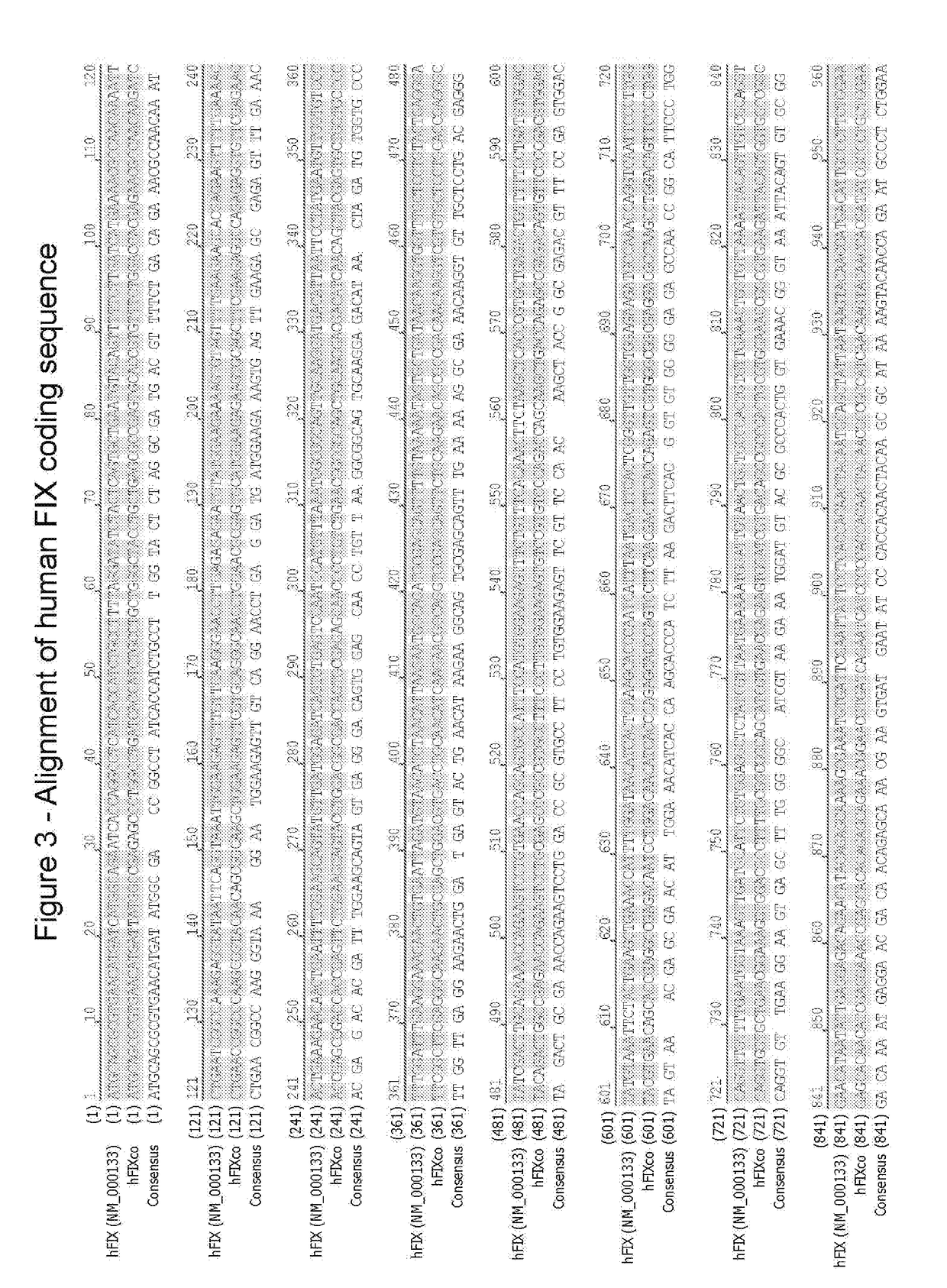Gene therapy for treating hemophilia b
a gene therapy and hemophilia technology, applied in the field of gene therapy for treating hemophilia b, can solve the problems of life-threatening consequences, frequent burdensome intravenous infusion, and chronic joint deformities, and achieve the effect of improving the response to current therapies and safe delivery of efficacious doses
- Summary
- Abstract
- Description
- Claims
- Application Information
AI Technical Summary
Benefits of technology
Problems solved by technology
Method used
Image
Examples
examples
6. EXAMPLE 1: PROTOCOL FOR TREATING HUMAN SUBJECTS
[0146]This Example relates to a gene therapy treatment for patients with genetically confirmed X-linked hemophilia B due to mutations in the clotting factor 9 (FIX) gene. In this example, the gene therapy vector, AAVrh.10.LSP.hFIX, a replication deficient adeno-associated viral vector rh.10 (AAVrh.10) expressing hFIX is administered to patients with hemophilia B. Efficacy of treatment can be assessed using FIX levels as a surrogate for transgene expression. Primary efficacy assessments include FIX levels during the first 12 weeks post treatment, with persistence of effect followed thereafter for at least 1 year. Long term safety and persistence of transgene expression may be measured post-treatment in plasma samples.
[0147]6.1. Gene Therapy Vector
[0148]The AAVrh.10.LSP.hFIXco vector consists of the AAV vector active ingredient and a formulation buffer. The external AAV vector component is a serotype rh.10, T=1 icosahedral capsid consi...
example 2
7. MANUFACTURE OF AAVRH.10.LSP.HFIX
[0172]7.1. Plasmids Used to Produce AAVrh.10.LSP.hFIX[0173]AAVrh.10.LSP.hFIX is produced by 3 plasmid DNA transfection of human HEK 293 MCB cells with:[0174](i) the pDTX.hFIX.101 vector plasmid described in Section 7.2.1[0175](ii) an AAV helper plasmid termed pAAV2.rh10.KanR containing the AAV rep2 and cap rh10 wild-type genes described in Section 7.2.2 and[0176](iii) a helper adenovirus plasmid termed pAdDeltaF6(Kan) described in Section 7.2.3.
[0177]7.2.1 Cis Plasmid (Vector Genome Expression Construct):
[0178]pENN.AAV.LSP.hFIXco3T.WPRE.bGH.KanR contained the human FIX expression cassette (FIG. 2; SEQ ID NO: 11. A plasmid including an alternate FIX sequence of SEQ ID NO: 13 is shown in SEQ ID NO: 12.). A codon optimized sequence of the hFIX-Padua amino acid sequence is shown in SEQ ID NO: 17. This plasmid encoded the rAAV vector genome. The polyA signal for the expression cassette was from the bovine growth hormone gene. The plasmid contained a li...
PUM
| Property | Measurement | Unit |
|---|---|---|
| Auxiliary magnetic field | aaaaa | aaaaa |
| Auxiliary magnetic field | aaaaa | aaaaa |
| Auxiliary magnetic field | aaaaa | aaaaa |
Abstract
Description
Claims
Application Information
 Login to View More
Login to View More - R&D
- Intellectual Property
- Life Sciences
- Materials
- Tech Scout
- Unparalleled Data Quality
- Higher Quality Content
- 60% Fewer Hallucinations
Browse by: Latest US Patents, China's latest patents, Technical Efficacy Thesaurus, Application Domain, Technology Topic, Popular Technical Reports.
© 2025 PatSnap. All rights reserved.Legal|Privacy policy|Modern Slavery Act Transparency Statement|Sitemap|About US| Contact US: help@patsnap.com



